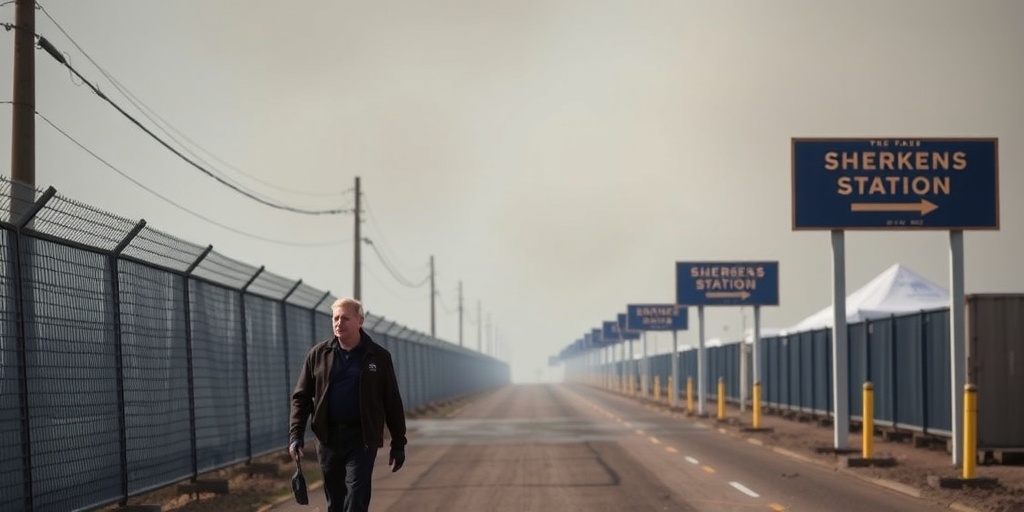Now Reading: Mauna Loa Observatory Lease at Risk Due to NOAA Budget Cuts
-
01
Mauna Loa Observatory Lease at Risk Due to NOAA Budget Cuts
Mauna Loa Observatory Lease at Risk Due to NOAA Budget Cuts
Title: Concerns Rise as Mauna Loa Observatory May Shutdown Amid Federal Lease Terminations
On the slopes of Mauna Loa, the largest active volcano in the world, the Mauna Loa Observatory has been a crucial site for monitoring greenhouse gas levels in the atmosphere since 1958. The observatory plays a vital role in climate science, contributing significantly to the understanding of carbon dioxide fluctuations through its data collection efforts. Notably, the observatory is responsible for the Keeling Curve, a renowned graph depicting the alarming rise in global carbon dioxide concentrations over the years.
However, recent reports indicate that the office that manages this significant scientific site in Hilo, Hawaii, could potentially close as early as August. A copy of an internal federal document obtained by The New York Times reveals that the observatory is among several buildings operated by the National Oceanic and Atmospheric Administration (NOAA) slated for possible lease terminations beginning in May. This raises questions about the future of operations at the observatory should these potential closures come to fruition.
Ralph Keeling, a climate science professor at the Scripps Institution of Oceanography and son of the curve’s originator, Charles Keeling, emphasized the importance of the data collected at the observatory. “These data are our eyes on the planet,” he stated. The information gathered has proven critical in understanding the dynamics of climate change, with the Keeling Curve illustrating that carbon dioxide levels have surged more than 100 parts per million since 1958. In 2024, carbon emissions reached unprecedented levels, surpassing previous records, and the annual readings indicated a major increase compared to the year before.
This upward trend in carbon emissions has significant repercussions on environmental conditions, contributing to climate change that has resulted in an increase in occurrences of extreme weather events such as heat waves, floods, and wildfires.
Amid efforts to streamline government operations and cut costs, the Department of Government Efficiency, an initiative led by billionaire Elon Musk, has proposed terminating 793 leases across various federal agencies. This list includes at least 19 NOAA leases, and the initiative is projected to save the federal government approximately $500 million. While this figure may seem substantial, it represents less than 0.1% of the over $1.3 trillion budget allocated for defense spending in the upcoming fiscal year.
In addition to proposals for lease terminations, the General Services Administration (GSA) had briefly published a list indicating plans to sell 443 federal buildings deemed "non-core to government operations.” Although this list was subsequently taken down due to public interest, it revealed that at least 13 NOAA facilities, including significant sites such as a satellite control room and the National Center for Environmental Information, were included. These buildings play an integral role in overseeing climate data collection and analysis, further heightening concerns over the potential impacts of these governmental cost-cutting measures.
Janet Coit, the former assistant administrator of NOAA Fisheries, expressed her apprehension regarding these drastic changes. NOAA Fisheries relies on various leased facilities to operate effectively; abrupt lease terminations could disrupt staff operations and access to essential equipment, thus hampering their ability to fulfill their mission. Coit warned, “If you kick them out of their offices, you just reduce their effectiveness and their ability to do their jobs.”
Furthermore, among the proposed lease terminations, nine facilities are law enforcement offices for NOAA Fisheries, which oversee millions of square miles of ocean territory. These officers ensure compliant and sustainable seafood harvesting, crucial for marine environmental conservation in U.S. waters.
The ongoing budget cuts and operational changes have also affected the accessibility of climate science. For instance, the National Centers for Environmental Information announced that monthly media briefings on U.S. and global climate data would cease in April, marking a critical reduction in public access to environmental information. John Bateman, a NOAA spokesman, cited the loss of a significant number of staff through layoffs and retirements as the reason for this decision.
The cuts at NOAA have been severe, with approximately 1,300 employees terminated in February alone, followed by plans to lay off an additional 1,000 staff. This significant reduction in workforce could ultimately diminish the agency’s capacity to monitor climate-related data and respond effectively to environmental changes.
As the situation develops, the potential closure of the Mauna Loa Observatory, along with other federal facilities, raises significant concerns within the scientific community and among those invested in climate research and environmental conservation. The reduction in available resources could adversely affect the ability to address the challenges posed by climate change, as scientists emphasize the need for continued data collection and research to inform policy and public understanding of this crucial issue.
Stay Informed With the Latest & Most Important News
Previous Post
Next Post
-
 01New technology breakthrough has everyone talking right now
01New technology breakthrough has everyone talking right now -
 02Unbelievable life hack everyone needs to try today
02Unbelievable life hack everyone needs to try today -
 03Fascinating discovery found buried deep beneath the ocean
03Fascinating discovery found buried deep beneath the ocean -
 04Man invents genius device that solves everyday problems
04Man invents genius device that solves everyday problems -
 05Shocking discovery that changes what we know forever
05Shocking discovery that changes what we know forever -
 06Internet goes wild over celebrity’s unexpected fashion choice
06Internet goes wild over celebrity’s unexpected fashion choice -
 07Rare animal sighting stuns scientists and wildlife lovers
07Rare animal sighting stuns scientists and wildlife lovers



















